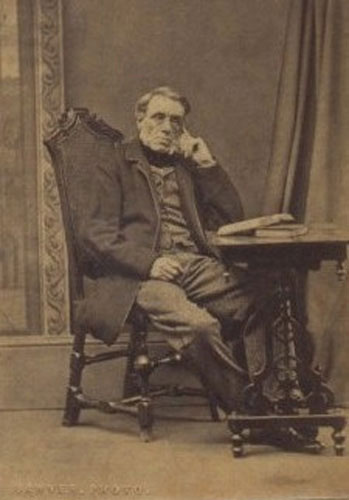1840 - 1860

Sawyer's portrait of Thomas Damant Eaton
Carte de Visite, late 1850s
John Robert Mather Sawyer was born in Sheffield and as a young adult he moved to London where he became a silk warehouseman. In his mid-twenties he moved to Norwich where he opened a shop as an optician, cutler and surgical instrument maker. He lived in the city, married Laura and they had three children. After an itinerant photographer, Oliver Sarony, left his showrooms at 42, London Street, Norwich, to move to Scarborough, John Sawyer moved into the same premises and advertised his opening in the Norwich Mercury on 12th November 1856 [see advertisement, below, in Sources and Notes]. Although Sarony had appointed William Freeman Jnr., ‘his pupil’, as his successor, Freeman chose to open new premises in Rampant Horse Street.
Sawyer’s advertisements showed business sense by giving equal prominence to his other products, namely cutlery, electro-plate, optical and photographic instruments, chemicals and the hire of magic lanterns and stereoscopic viewers. Sawyer was a member of the Norwich Photographic Society and in their 1856 exhibition he showed several portraits, many hand coloured (one with oils), and views of Norwich Cathedral, the Grammar School and Foundry Bridge.
| Subject | Negative | |
| 27 | Portrait (Coloured) | Collodion |
| 30 | Cathedral, Norwich | Wax |
| 32 | Grammar School, Norwich | Wax |
| 35 | Norwich Cathedral | Wax |
| 37 | Portrait (Coloured) | Collodion |
| 152 | Foundry Bridge | Wax |
| 181 | Portrait (Crayon) | Collodion |
| 188 | Portrait | Collodion |
| 256 | Four Portraits (Coloured) | Collodion |
| 315 | Portrait (Coloured in Oils) | Collodion |
| 318 | Portrait (Coloured) | Collodion |
In 1862 he opened his so-called Italian Studio at 46 London Street, Norwich and by 1866 he was making 6000 negatives and producing 50,000 prints1 a year. The public’s enthusiasm for cheap photographs in the form of the carte-de-visite undoubtedly contributed greatly to the success of his business. The cartes issued by the studio bore the motto 'Solem certissima signa sequuntur' which can be translated as ‘Most sure are the signs which attend the sun’.
John Werge2 claimed that in 1869 Sawyer went to Berlin and learned of the collotype process from Herr Ghémoser (Joseph Eder3 says this was Max Gemoser, a lithographer). When Sawyer returned to Norwich he continued the development of the collotype process and in 1871 formed a partnership with Walter Strickland Bird. Soon they opened in London with a plan to sell collotypes but it was their association with the Autotype Fine Art Company that opened an entirely new business opportunity. In 1872 the company published a book4 on the history of Norwich Cathedral illustrated with fine Autotypes made from negatives by Sawyer and Bird and showing the building and its sculptured roof bosses. In 1875 Sawyer published ‘The Autotype Process’5 which foreshadowed the purchase, in 1876 by Sawyer, Bird and J. A. Spencer, of the Autotype Fine Art Company business from Messrs. Winsor and Johnson. Despite acquiring the patent rights for Joseph Swan’s pigment printing process, the company had not been a commercial success but when Sawyer, the creative force behind the re-born Autotype Company, patented a production method for carbon printing, the business began to flourish and, under his direction, expanded into a multi-national organisation.
Meanwhile, back in Norwich, Albert Coe was brought in to manage the Sawyer & Bird studio. When Bird retired, Coe continued to run the business and by 1887 renamed it A. E. Coe. Now known as Barrett & Coe, it claims to have the oldest surviving purpose-built studio in the world.
Sources and Notes
-
Private correspondence
-
Werge, John. The Evolution of Photography… London: Piper & Carter and John Werge, 1890, pp121,122.
-
Eder, Josef Maria. History of Photography. New York: Columbia University Press, 1945. [Dover edition, 1978, p619]
Goulburn, Edward Meyrick and Symons, Henry. The Ancient Sculptures in the Roof of Norwich Cathedral, Which Exhibit the Course of Scripture History. With a History of the See of Norwich from Its Foundation to the Dissolution of the Monasteries. Norwich: Henry W. Stacy, 1876.
Sawyer, J. R. and Autotype Fine Art Company. The Autotype Process, Being a Practical Manual of Instruction in the Art of Printing in Permanent Pigments: With a Notice of the Autotype Mechanical Process. London: Autotype Fine Art Company, 1877.
Mr. SAWYER,
PHOTOGRAPHER,
Informs the Nobility, Clergy, and Gentry of Norfolk
that he has OPENED THE SHOP lately occupied
by Mr. Sarony,
No. 42, LONDON STREET.
Having returned from Paris and London, he has made himself master of the most recent improvements in the Photographic Art; and having secured the services of Three talented Artists, can, with confidence, assure his numerous patrons, that the portraits sent out from his Establishment are equal to anything yet produced.
Mr Sawyer has discovered a process by which the time of sitting is reduced by two-thirds, and persons are able to see and judge of the likeness before leaving the Gallery.
Mr Sawyer calls attention to his new Photographic
CRAYON BUSTS,
which have been pronounced by competent Judges, the most artistic application of Photography yet seen.
LIST OF PRICES
Enamelled Portrait in Case, from 5s 6d to 15s.
Finished in India Ink or Sepia, 20s and 25s.
Oil or Water Colours, £2.2s and £3.3s.
Crayon Busts, large size, 25s.
Plain Photographs on Paper, 10s 6d., and 3s. 6d each extra copy
PHOTOGRAPHS COLOURED FOR THE PROFESSION.
STEREOSCOPES and VIEWS SENT FOR INSPECTION.
Tuition in each Branch and Apparatus supplied.
